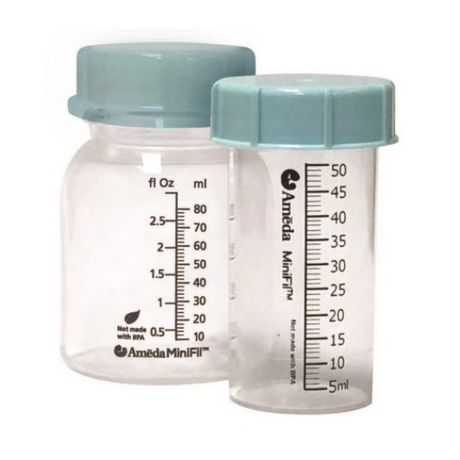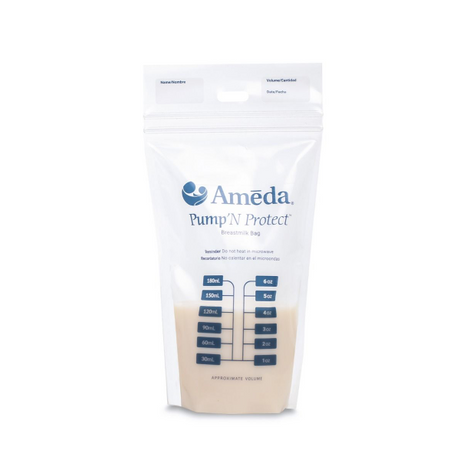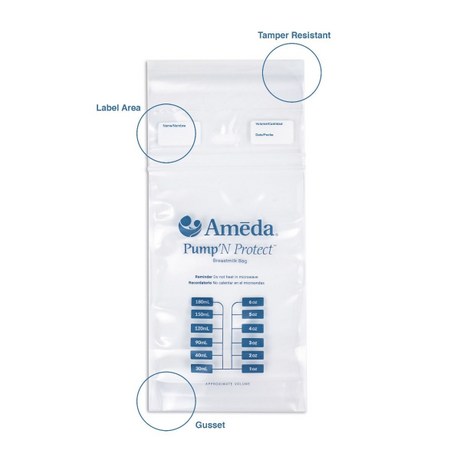Published:
You and your village? You got this.
Making breastfeeding work while you’re working takes some upfront planning and the right kind of support. There are three main areas you’ll want to consider: your breastfeeding strategy, what to do before you head back to work, and how to have a great experience while you’re working.
Which breastfeeding strategy works for you?
Breastmilk is great for you baby, but it doesn’t have to be all or nothing. First, figure out which of these three strategies works best for you and your baby. The most important part of your plan is to have a healthy baby and a healthy mom. Ask for the support you need and recognize that your breastfeeding strategy may change over time.
1. Exclusive breastfeeding
This could mean going to your baby for feedings or having your baby brought to you. Some moms are able to keep their babies with them at work. Some moms use reverse cycle nursing, which means breastfeeding often at home and working during their baby’s longest sleep stretch.
2. Breastfeed when you are with your baby/pump when you’re not
If you choose to pump milk for missed feedings, remember to pump frequently enough to make up for the missed feedings so that your milk supply doesn’t decrease before you want it to. It’s supply and demand: the more you pump, the more milk you will have. A general guide is to plan to pump every 3 hours that you’re away from your baby.
Finding a caregiver close to work can reduce travel time, time apart from your baby, and the need to pump because you’ll be able to breastfeed more often.
Tip: Making it work for you
Moms who are away from their babies 30+ hours per week often choose an automatic double pump for efficiency and to help keep their milk supply up.
Before you head back to work
1. Breastfeed your baby at the breast as much as you can
This will set you up with a good milk supply. Count the number of times you breastfeed every day. This is your goal number, and keeping this daily number (breastfeedings plus pumpings) consistent after you’re back at work will help keep your milk production steady while pumping.
2. Choose a breast pump that fits your needs
A double electric breast pump can make pumping go faster if you’re planning to pump during relatively short breaks, a few times a day, and/or many times a week. A manual pump can work well if you have longer breaks and only plan to pump a few times a week. Avoid used pumps and those borrowed from other moms because they may be worn out or unsafe to share.
3. Try a bottle before you need to rely on it
When your baby is about 4 weeks old and is breastfeeding well, you can try giving your baby some pumped milk in a bottle. Because your baby naturally associates you with breastfeeding, you may need to leave the room and have someone else bottle-feed your baby to help the process go smoothly.
4. Practice pumping
Most moms pump and store milk once or twice a day before returning to work. Once you’re at work, the milk you pump one day can be left for your baby the next day. If you start pumping once a day about 3 to 4 weeks before going to work, you’ll have time to practice with your pump and store a reserve of milk.
5. Don’t miss a beat
Try not to miss a breastfeeding or pumping session. If your baby takes a bottle instead of breastfeeding, you’ll need to make up the missed feeding session with a pumping session. Otherwise, your body will think you are trying to wean and you’ll naturally begin to produce less milk.
Tip: Making it work for you
You already know that breastfeeding is optimal for your baby. Did you also know that it can save money, too? Infant formula can cost up to $2,000/year.
6. Keep yourself fueled
Remember to eat healthy snacks and to drink plenty of water and other healthy fluids throughout the day.
Having a great experience while you’re working
1. Breastfeed early and often
Breastfeed your baby before you go to work and as soon as you get home from work. Breastfeeding when you are with your baby will help keep up your milk supply.
Every baby is different, but in general, if you are apart from your baby for 8 to 12 hours, you can expect that your baby will take 10 to 15 oz. of milk during that time. This is about 1/3 of your baby’s daily intake.
Starting at about five weeks, many babies take 25 to 35 oz. total (breastfeeding and pumped milk) per day. This amount typically is stable until your baby is about six months old. Around six months old, your baby may start taking more solids and daily milk intake may start to go down.
2. Pick your spot
Find a place where you can relax and have some privacy for pumping at work. Ask if your workplace has a lactation room. If not, ask about a private office, empty conference room, storage room, or lounge with an electrical outlet. Federal laws now require that workplaces provide a private place for pumping at work.
You will also need a place to wash your hands and, ideally, your pump kit. If a place to wash the parts of your kit isn’t readily available, consider having a few kits to use throughout the day and wash them when you get home.
3. Put your plan in place
Schedule your pumping breaks to allow about 20 relaxed minutes for pumping and then cleaning the parts of the pump kit. To figure out how many times you’ll pump at work, divide the number of hours you are away by three (include travel time).
Every breastfeeding mom is familiar with the sensation of fullness in her breasts when it’s time to express milk. Wash hands and then gently massage your breasts before and during pumping. Hand expressing the last bit of milk after pumping has been shown to help drain your breasts better and increase milk supply. You may find that a hands-free bra helps make pumping easier.
Tip: Making it work for you
Sometimes it helps to keep a picture of your baby with your pumping kit because the visual reminder of why you are pumping can help your milk start to flow.
4. Storing breast milk at work
In general, if breast milk is stored in a room that’s 66°-72° F (19°-22° C), it can stay uncooled for 6 to 10 hours. The warmer the room the less time your milk can stay uncooled. If you need to cool breast milk, use an insulated pump cooler case, cooler bag, or refrigerator. (Link to Milk Storage Guidelines when page created)
This is general information and does not replace the advice of your healthcare provider. If you have a problem you cannot solve quickly, seek help right away. Every baby is different. If in doubt, contact your physician or healthcare provider.








